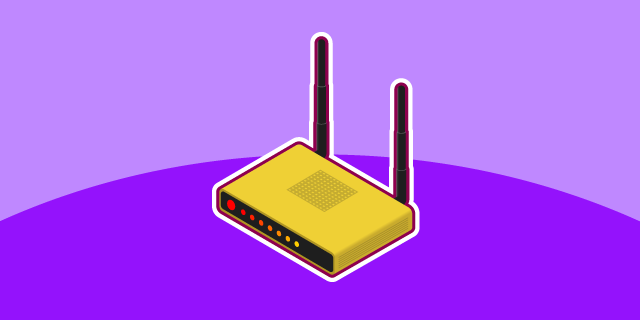A Short Guide to Full-Fibre Broadband
Reading Time: 4 minutes
Full-fibre broadband, also known as fibre-to-the-premises (FTTP), is the latest and most advanced form of internet connection. It uses fibre-optic cables to provide faster and more reliable internet speeds compared to traditional copper-based connections. Here is a short guide based on the most frequent questions to help you understand full-fibre. What is full-fibre broadband? Full-fibre […]

Full-fibre broadband, also known as fibre-to-the-premises (FTTP), is the latest and most advanced form of internet connection. It uses fibre-optic cables to provide faster and more reliable internet speeds compared to traditional copper-based connections. Here is a short guide based on the most frequent questions to help you understand full-fibre.
What is full-fibre broadband?
Full-fibre broadband is an internet connection that uses fibre-optic cables to provide faster and more reliable internet speeds. Unlike traditional internet connections, which use copper-based cables, full-fibre uses a direct fibre-optic connection from the service provider to your premises.
How does full-fibre broadband work?
Full-fibre broadband works by using fibre-optic cables to transmit data as light signals. These signals travel along the cable at incredible speeds, providing faster and more reliable internet speeds than traditional copper-based connections.
What are the benefits of full-fibre?
- Faster download and upload speeds
One of the biggest benefits of full-fibre is its speed. Full-fibre can provide download speeds of up to 1 Gbps (Gigabit per second) and upload speeds of up to 220 Mbps (Megabits per second). This is much faster than the speeds offered by traditional copper-based connections, which typically provide download speeds of around 50 Mbps.
- More reliable connection
Full fibre provides a more reliable connection than traditional copper-based connections. Since the signal is transmitted using light rather than electrical signals, there is less interference and signal degradation, resulting in a more stable and reliable connection. This is especially important for businesses that operate on a consistent internet connection.
- Lower latency, providing a better gaming and streaming experience
Full fibre broadband has lower latency compared to traditional broadband connections. Latency is the time it takes for data to travel from your device to the internet and back. With full-fibre, latency is typically lower than 20ms, making it ideal for online gaming and streaming, where a fast and responsive connection is essential.
- Future-proof, with the ability to support emerging technologies such as 5G, virtual reality and augmented reality
These technologies require high-speed and reliable internet connectivity to function correctly. Full-fibre provides faster internet speeds, lower latency, and more reliable connections compared to traditional connections, making it an ideal option to support these technologies.
- The ability to support multiple devices simultaneously
This means that everyone in the household or business can enjoy a fast and reliable internet connection without experiencing any lags or buffering. This feature is particularly useful for households or businesses with multiple users who require a consistent and fast internet connection.

Full fibre broadband providers
- Openreach: Provides infrastructure for many ISPs, including BT, Sky, and TalkTalk.
- Virgin Media: Offers its own full fibre network with high-speed packages.
- CityFibre: Partnering with various ISPs to expand full-fibre coverage across the UK.
What about the costs? Is fibre broadband more expensive than traditional? The cost of full-fibre broadband can vary depending on the provider and the package you choose. While it can be more expensive than traditional broadband, the benefits of faster speeds and greater reliability often justify the higher price. Additionally, competition among providers is helping to drive prices down.
When is full fibre coming to my area?
To find out when full-fibre broadband is coming to your area, you can:
- Use our Intelligent Pairing Tool: Enter your postcode in our checker to see if full fibre is available and get the latest broadband deals tailored to your location.
[POSTCODE CHECKER]
- Check the Network Coverage Map: If full fibre hasn't reached your street yet, our coverage map will show you when it's expected to arrive in your area.
[NETWORK COVERAGE MAP]
- Check with your local ISP (internet service provider): To find out if they offer full-fibre broadband in your area or if there are any plans to roll it out soon. Remember that the rollout of full-fibre broadband is an ongoing process, and it may take some time for it to become available in all areas.

Time to do the switch
Good news, full fibre broadband is available in your area and you can now enjoy the benefits of ultrafast speed and all the wonders the internet has to offer. Time to switch internet providers, or even better, switch to a better package with the same network. Follow the steps below and you'll get the best deal:
- Compare Providers: Our intelligent pairing tool allows you to filter your preferences and provide tailored solutions for your broadband needs. Look at different providers offering full fibre services, considering factors like speed, price, and customer service.
- Choose a Package: Select a broadband package that fits your needs. Full fibre packages often come with various speed options and additional services like TV and phone bundles.
- Schedule Installation: Once you've chosen a provider, schedule an installation. This typically involves an engineer visiting your home to install a new fibre line and set up the necessary equipment.
Back to you
What does the future hold for full fibre across the country? Rural seem so far to get the end of the stick when it comes to internet quality due to infrastructure or better said, the lack of. However, The UK government and industry stakeholders are committed to expanding full fibre coverage, with ambitious targets for nationwide availability by the mid-2020s. This expansion is essential for supporting the UK's digital economy and ensuring that homes and businesses have access to world-class internet infrastructure.


